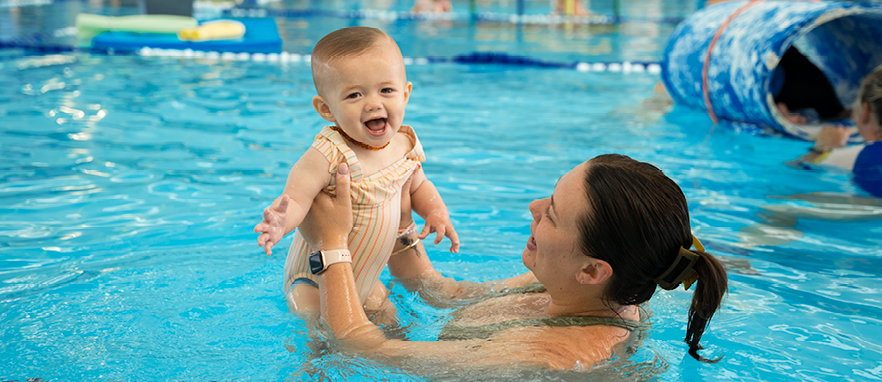Dealing with Water Anxiety in Kids: Strategies to Help Overcome Fear of Swimming
Dealing with a child’s fear of water, also known as aquaphobia, can be a daunting task but is an important process. Here are some strategies…

Dealing with a child’s fear of water, also known as aquaphobia, can be a daunting task but is an important process. Here are some strategies to help overcome this fear and help your child to become more comfortable in the water.
- Acknowledge and validate their emotions: Start by acknowledging your child’s fear and anxiety about water. Let them know its ok to feel this way and that you’re there to support them. Validate their feelings and be patient.
- Conditioning at home: Begin by introducing water slowing in a controlled environment like the bath. Use cue words like “ ready go” and gently pour small amounts of water across their body to prepare them for the sensation of water. Gradually progress to pouring a small amount of water over the side of their face, and then the front.
- Play with water: Give your child opportunities to play with water in a fun and safe manner. Use cups, buckets and sprinklers for water play. Make it a joyful experience, and always supervise closely.
- Go at their pace. Respect your child’s emotions and comfort level. Encourage them to gradually approach the waters edge with you and allow them time to process their environment and regulate their feelings. Some children may adapt more quickly than others.
- Frequent exposure: The more often your child can interact with water in a controlled and supervised setting, the more confident they will become. Consider regular trips to the pool or supervised bath play.
- Always be in the water with them: When your child is in the water, always be at arm’s length to provide a sense of security and safety.
- Shallow water activities: Start with activities in shallow water such as lying down in the bath or exploring zero depth play areas at pools. These experiences help build confidence.
- Floating practice: Practice floating in shallow water. Use floatation devices like pool noodles or kickboard for added support. Always supervise closely when using equipment. There is no substitute for supervision.
- Overcoming fear of deep water: If your child is afraid of deep water, gradually build confidence by starting at the shallow end, holding onto the wall, and moving hands and feet along the wall towards the deep. Encourage them to float on their back with a noodle, practicing rolling over from back to front.
- Breathing exercises: Practice deep breathing and breath holding away from the pool. Counting out loud while your child holds their breath can be a game to play even outside of the water.
- Swimming lessons: Enroll your child in swimming lessons for babies with qualified teachers. Learning to swim is a valuable life skill and working together with a swim teacher can help boost their confidence and water safety and swimming skills.
- Watch and learn: Before formal lessons begin, spend time watching swimming lessons to help your child become familiar with the aquatic environment, the sounds and activities. Let them take the initiative when they’re ready to join the class. Swim teachers have a number of techniques to assist your child to get started.
- Water safety awareness: Teach your child about water safety from an early age. Ensure they understand the importance of respecting the water and following water safety rules.
Remember that each child is unique, and their progress may vary. Be patient, supportive and always prioritize safety. Overcoming fear of water is a gradual process and your child’s confidence will grow over time with your guidance and encouragement.